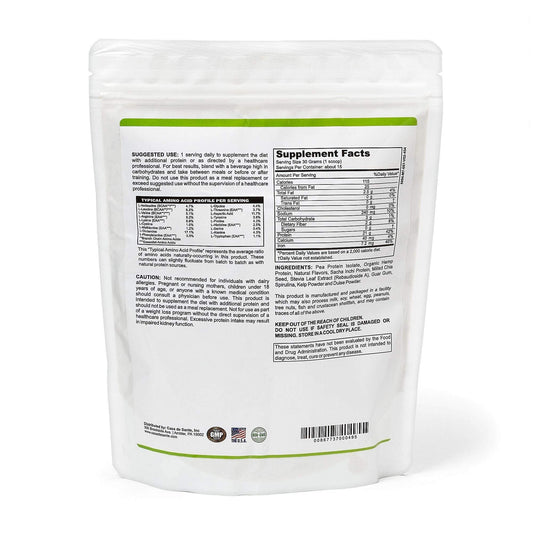Mastering Rest: 6 Essential Tips to Getting Sleep When You Have Dysautonomia
Getting a good night's sleep can be tough for anyone, but if you have dysautonomia, it can feel like an uphill battle. This condition affects your autonomic nervous system, making it harder to maintain a regular sleep pattern. Fortunately, there are ways to improve your sleep habits. Here are 6 tips to getting sleep when you have dysautonomia that can help you find a bit more rest and relaxation at night.
Key Takeaways
- Stick to a regular sleep schedule to help your body know when it's time to rest.
- Make your bedroom a peaceful place by reducing noise and light.
- Invest in comfortable bedding to support a good night's sleep.
- Create a calming routine before bed to help signal your body that it's time to wind down.
- Limit your screen time in the evening to help your brain relax.
1. Establishing A Consistent Sleep Schedule

Okay, so, dysautonomia and sleep? Not exactly best friends, right? One of the biggest things that's helped me is sticking to a sleep schedule. I know, I know, it sounds super basic, but trust me, it makes a difference.
Our bodies love routine, and that includes when we hit the hay and when we wake up. Think of it like this: you're training your body to expect sleep at a certain time. It's not a magic bullet, but it's a solid foundation to build on.
Here's what I've found works:
- Pick a bedtime and wake-up time: And stick to it, even on weekends. Yeah, I know, weekends, but consistency is key here.
- Give yourself a buffer: Don't aim for exactly 8 hours. Give yourself a little wiggle room in case it takes you a bit to fall asleep.
- Be patient: It might take a few weeks for your body to adjust. Don't get discouraged if you don't see results right away.
It's not about perfection; it's about progress. Some nights will be rough, and that's okay. Just get back on track the next day.
And remember, this isn't just about the hours you sleep. It's about training your body to anticipate sleep. Think of it as setting the stage for a good night's rest. It's all part of managing evening routine and getting some shut-eye when your body's being a bit of a rebel.
2. Creating A Sleep-Conducive Environment
Okay, so you've got your sleep schedule down (or at least you're trying), but what about the actual space where you're trying to catch those Zzz's? Your bedroom environment plays a HUGE role in how well you sleep, especially when you're dealing with dysautonomia. It's not just about having a bed; it's about creating a sanctuary that tells your body it's time to rest.
Think about it: a bright, noisy, cluttered room isn't exactly going to lull you into a peaceful slumber, right? So, let's break down how to make your bedroom a sleep-promoting haven.
First off, darkness is your friend. I'm talking blackout curtains or shades. Seriously, block out as much light as possible. Even the tiniest bit of light can mess with your melatonin production, which is the hormone that regulates sleep. If you can't get your room completely dark, try a sleep mask.
Next up, think about sound. Is your bedroom noisy? Maybe you live near a busy street or have noisy neighbors. If so, consider using a white noise machine, a fan, or even earplugs to block out the distractions. Some people find nature sounds or ambient music helpful too. Experiment and see what works for you.
Temperature is another big one. Most experts agree that a slightly cool room is ideal for sleep. Aim for somewhere between 60 and 67 degrees Fahrenheit. If you're too hot or too cold, you're going to toss and turn all night. A consistent sleep schedule is important, but so is the temperature of your room.
Finally, declutter! A messy room can lead to a messy mind, and that's the last thing you need when you're trying to relax. Keep your bedroom tidy and organized. Make your bed every morning. It's a small thing, but it can make a big difference in how you feel when you walk into your bedroom at night.
Creating a sleep-conducive environment is all about minimizing distractions and maximizing comfort. It's about creating a space that signals to your brain and body that it's time to wind down and prepare for sleep. It might take some trial and error to figure out what works best for you, but it's worth the effort.
Here's a quick checklist to get you started:
- Blackout curtains or shades
- White noise machine or earplugs
- Cool room temperature
- Decluttered space
- Comfortable bedding
3. Prioritizing Comfort With The Right Bedding
Okay, so you're trying to get some decent sleep with dysautonomia, right? It's not just about when you sleep, but also how you sleep. And a big part of that is your bedding. I mean, think about it – you're spending a third of your life in bed, so you might as well make it a comfy place to be.
Mattresses: The Foundation of Good Sleep
Your mattress is super important. It's the base for everything else. If your mattress isn't right, nothing else will matter. You need something that supports you properly, especially if you have dysautonomia and maybe some hypermobility issues. A mattress that's too soft can cause you to sink in and mess up your spine alignment, while one that's too firm can put pressure on all the wrong spots. It's a Goldilocks situation – you need something just right.
Mattress Toppers: The Comfort Layer
Don't underestimate the power of a good mattress topper. Sometimes, you don't need a whole new mattress; you just need to tweak what you already have. A topper can add a layer of plushness or firmness, depending on what you need.
I used to have this super old, lumpy mattress, and I couldn't afford a new one. I got a memory foam topper, and it was a game-changer. Suddenly, my bed was actually comfortable. It's a cheap way to make a big difference.
Pillows: Head and Neck Support
Pillows are another big deal. You need something that supports your head and neck properly. If you're a side sleeper, you'll need a thicker pillow to fill the space between your head and shoulder. If you sleep on your back, you'll want something thinner. And if you sleep on your stomach... well, maybe try to stop doing that, it's not great for your neck.
Here are some pillow types to consider:
- Memory Foam Pillows: These mold to the shape of your head and neck, providing great support.
- Down Pillows: Soft and fluffy, but might not be supportive enough for everyone.
- Buckwheat Pillows: Filled with buckwheat hulls, these are firm and moldable, but can be a bit noisy.
4. Unwinding With A Pre-sleep Routine
Okay, so you've got your sleep schedule down, your room is like a cave, and you're practically swimming in comfy bedding. But what about your brain? If you're anything like me, it's still buzzing with a million thoughts when you climb into bed. That's where a pre-sleep routine comes in. It's all about signaling to your body and mind that it's time to wind down.
- Reading (a real book): Seriously, ditch the phone and grab a physical book. Nothing too intense, though. Think light and easy.
- Gentle Stretching or Yoga: A few simple stretches can release tension. I like to do some cat-cow stretches and a few gentle twists.
- Meditation or Deep Breathing: Even five minutes of focused breathing can make a difference. There are tons of free apps that can guide you.
I've found that consistency is key. It doesn't have to be a super rigid routine, but doing the same few things each night helps my brain recognize that it's time to sleep. It's like Pavlov's dogs, but for bedtime.
It might take some trial and error to find what works best for you. The goal is to create a calming buffer between your busy day and your peaceful night.
5. Limiting Screen Time
Okay, let's be real, this one's tough. We're all glued to our screens, right? But when you're dealing with dysautonomia, that late-night scroll can seriously mess with your sleep. It's not just about the content; it's the light itself.
The blue light emitted from screens can trick your brain into thinking it's still daytime, which then throws off your melatonin production. And melatonin? That's your sleep hormone. So, less melatonin = harder to fall asleep and stay asleep. It's a vicious cycle.
Here's the deal:
- Set a Screen Curfew: Aim for at least an hour, maybe even two, before bed where you ditch the devices. Read a book, take a bath, meditate – anything but screens.
- Blue Light Filters: If you absolutely must use a screen, turn on the blue light filter. Most phones and tablets have this built-in now. It's not a perfect solution, but it's better than nothing.
- Consider a Night Light: If you need some light, try a red or amber night light. These colors are less likely to interfere with melatonin production.
I know, I know, it's easier said than done. But trust me, even small changes can make a big difference. Think of it as an experiment. Try cutting back on screen time for a week and see how your sleep improves. You might be surprised. And if you need some help with personalized recommendations, there are plenty of resources out there.
It's all about finding what works for you and your body. Good luck!
6. Adjusting Your Evening Diet

What you eat in the evening can really mess with your sleep, especially if you have dysautonomia. I've learned this the hard way! It's not just about what you eat, but also when you eat it.
Timing your meals and choosing the right foods can make a big difference.
I used to think I could eat whatever I wanted, whenever I wanted. Big mistake! Late-night pizza? Forget about it. Now, I try to finish eating at least 2-3 hours before bed. It gives my body time to digest, and I don't wake up feeling awful.
Here are a few things I've found helpful:
- Avoid heavy, greasy, or spicy foods close to bedtime. They can cause heartburn and indigestion, which are not conducive to sleep.
- Opt for lighter meals that are easy to digest. Think a small portion of lean protein and some cooked vegetables.
- Consider a small snack with complex carbs if you're hungry before bed. A few whole-grain crackers can do the trick.
Final Thoughts on Resting Well with Dysautonomia
Getting good sleep with dysautonomia can feel like a tough battle, but it’s not impossible. By sticking to a routine, creating a comfy sleep space, and being mindful of what you eat and drink before bed, you can make a real difference. Remember, it’s all about finding what works for you. Don’t hesitate to try different strategies until you hit the right mix. And if you’re still struggling, chatting with a healthcare provider can help you figure out the best path forward. Sleep is important, so keep pushing for those restful nights!
Frequently Asked Questions
What is dysautonomia?
Dysautonomia is a condition where the autonomic nervous system does not work properly. This system controls things like heart rate, blood pressure, and digestion.
How can I improve my sleep with dysautonomia?
You can improve your sleep by keeping a regular sleep schedule, making your bedroom comfortable, and having a calming bedtime routine.
Is it okay to use screens before bed?
It's best to avoid screens before bed because the blue light can make it harder to fall asleep.
What should I eat for dinner if I have dysautonomia?
Try to eat a light dinner that is low in sugar and caffeine. Foods like whole grains, lean proteins, and vegetables are good choices.
Can exercise help with dysautonomia symptoms?
Yes, gentle exercise can help improve your symptoms. Activities like walking or stretching can be beneficial.
What if I still can’t sleep?
If you still can’t sleep, talk to your doctor. They might suggest other treatments or changes to help you sleep better.




























